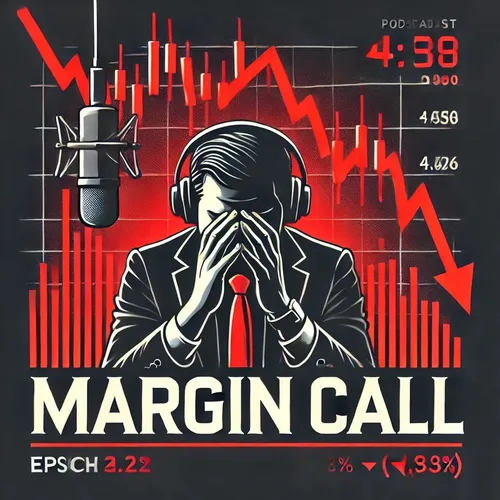Margin Calls and Short Positions: The Leverage Tightrope Amidst Market Volatility
- Author
- Quiet. Please
- Published
- Mon 11 Aug 2025
- Episode Link
- https://www.spreaker.com/episode/margin-calls-and-short-positions-the-leverage-tightrope-amidst-market-volatility--67328864
Margin calls and short positions are two sides of the leverage coin, and when prices move fast, they collide. A margin call happens when the equity in a leveraged account falls below the broker’s maintenance requirement, forcing the trader to add cash or liquidate positions. Brokers do this to control risk; if you borrow to trade and the market moves against you, the broker demands more collateral to keep the account solvent. Kotak Securities explains a margin shortfall as the gap between margin required and margin available, and if it appears, orders can be rejected or positions squared off to restore balance. According to Kotak Securities, insufficient margin can trigger rejections with messages like RMS: Margin exceeds, or lead to forced liquidation if shortfalls persist.
Short selling raises the stakes because losses are theoretically unlimited. A short seller borrows shares and sells them, hoping to buy them back cheaper later. If the price rises instead, the broker marks the position to market, equity shrinks, and margin calls arrive. If the listener cannot post collateral quickly, the broker may buy back the shares at market prices, crystalizing losses. This dynamic fuels short squeezes, where rising prices force shorts to cover, which pushes prices even higher in a feedback loop. RealInvestmentAdvice notes that in speculative phases—like meme-stock surges—liquidity and leverage drive price spikes that can punish shorts rapidly, especially when options flow and social momentum amplify moves.
In options markets, selling options on margin can be even more unforgiving. Option sellers collect premium but carry obligations that expand as volatility or adverse price movements hit. TradingView’s options primers emphasize that leverage is powerful but misused leverage invites margin calls, especially with undefined-risk strategies like short calls without cover. When volatility jumps, margin requirements can rise intraday, tightening the noose on overextended positions.
Institutional players navigate margin risks through structure. Top1000Funds reports that seasoned private-credit managers negotiate financing lines that are less mark-to-market sensitive, reducing the odds of sudden collateral calls when asset values wobble. That cushion can be the difference between deploying capital in choppy markets and being forced to de-risk at the worst time. The principle is universal: stable funding and conservative leverage lower the probability of a destructive margin spiral.
For shorts specifically in trouble, the signs are familiar. Rapid price appreciation in heavily shorted names, elevated borrow fees, and scarcity of lendable shares strain positions. Add options-driven gamma squeezes—where market makers hedge by buying stock as calls go in the money—and shorts face accelerating losses. According to RealInvestmentAdvice, speculative bursts often coincide with high call-to-put ratios and zero-days-to-expiration activity, conditions that have preceded sharp reversals but, in the moment, can force widespread short covering. In those windows, brokers hike margin requirements, and weaker hands capitulate first.
Risk control is straightforward in concept and difficult in practice. Maintain excess liquidity above maintenance margins, set hard loss limits, and avoid concentration in crowded, hard-to-borrow shorts. Use defined-risk structures—like buying puts instead of shorting stock outright—to cap losses. For option selling, define risk with spreads and size positions for volatility shocks. As Kotak Securities outlines, knowing how margin is calculated across segments—and monitoring real-time requirements—helps avoid forced selling that turns drawdowns into permanent losses.
In the end, margin calls are risk management mechanisms, not moral judgments, and short positions are tools, not taboos. But when markets accelerate, leverage magnifies outcomes. Those who plan...
